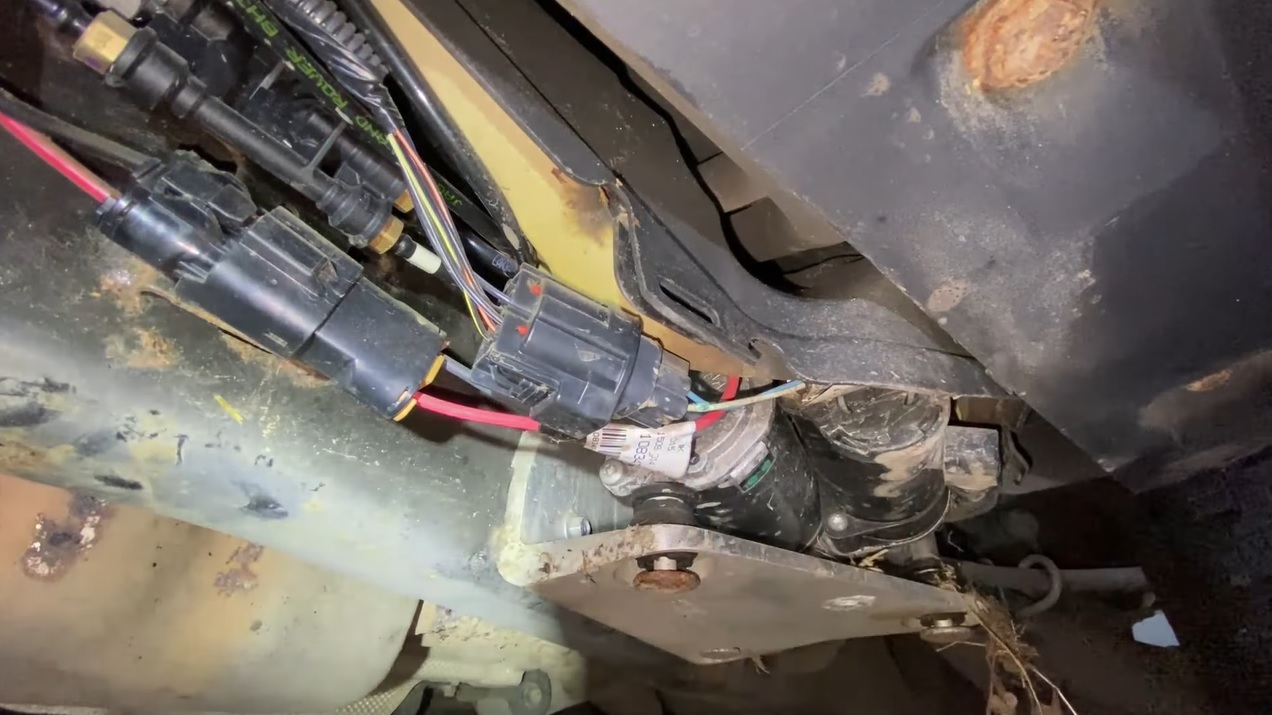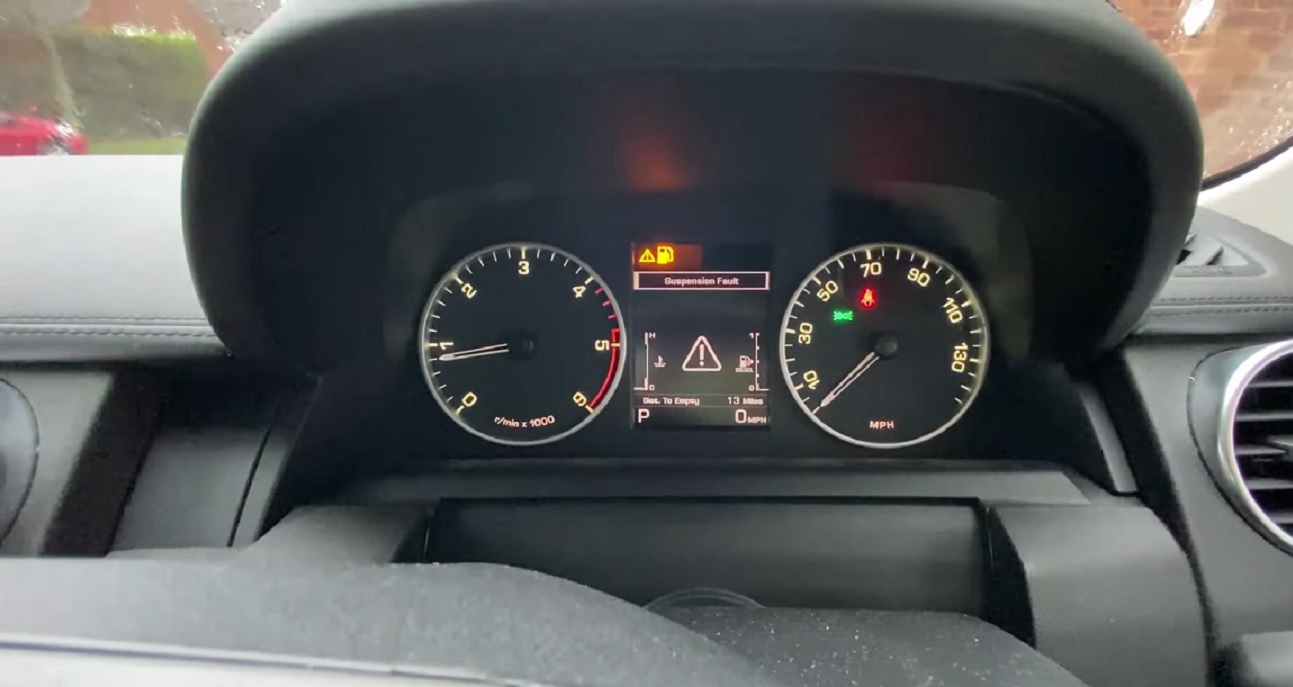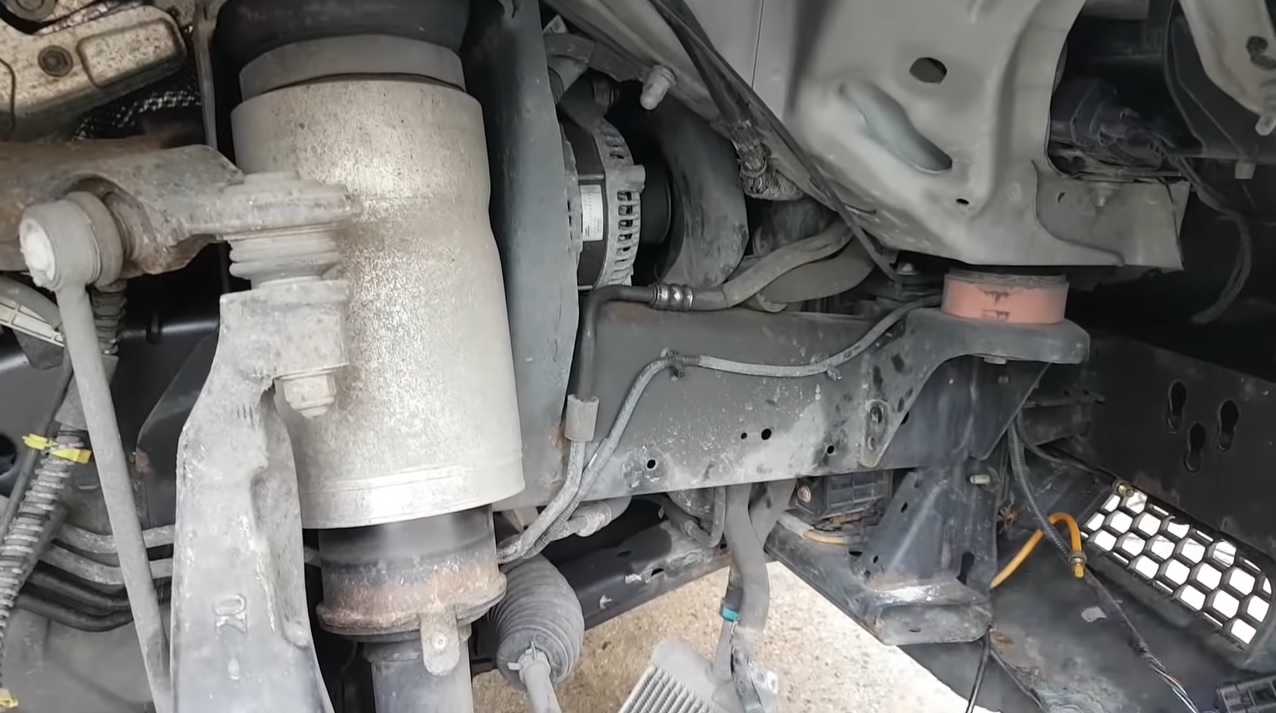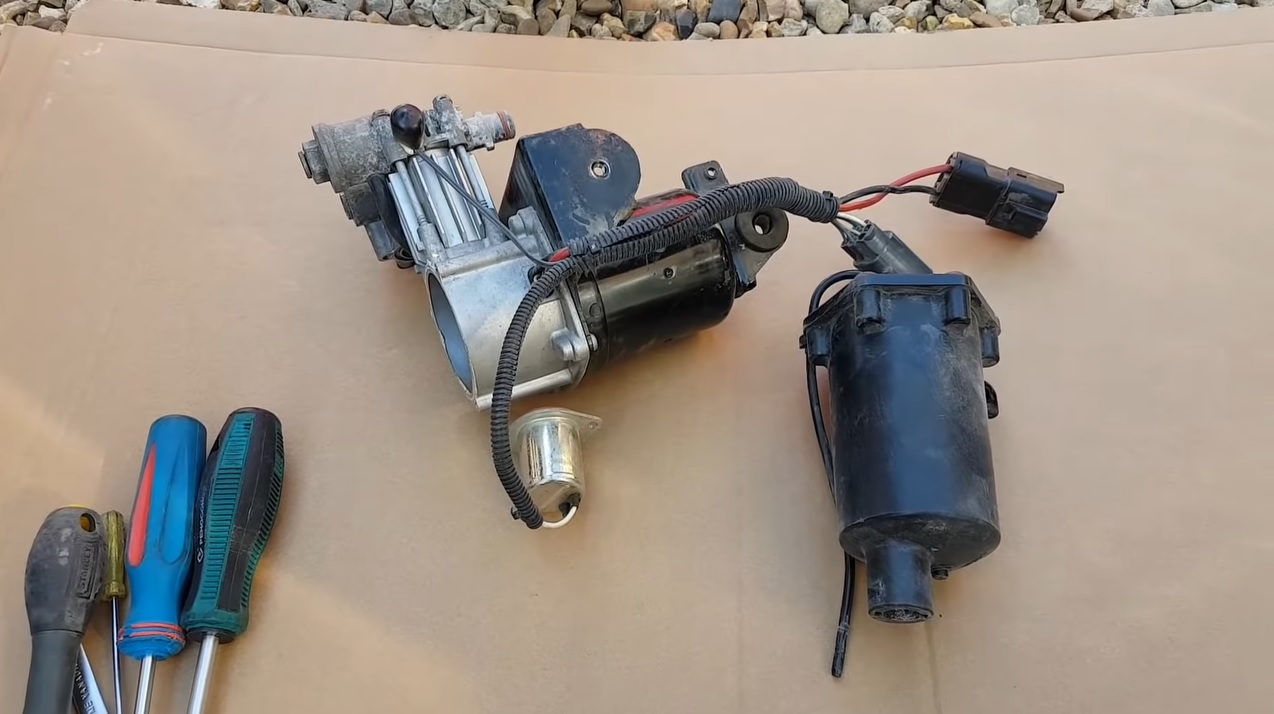
Just as the Range Rover is a luxury brand, all its parts and components are made of high-grade material. And the suspension is also the same. It plays a vital role in increasing ride height and improving the riding experience on and off the road. Unfortunately, even air suspension of vehicles like Range Rover can show various issues and can even fail.
When the Range Rover suspension fault code or light code shows up, it can indicate various problems. There might be leaking airbags, faulty height sensors, faulty air exhaust valves, etc. But the good thing is that most of these problems are fixable. In this article, I will guide you through everything.

Range Rover Suspension Warning Light Codes And Their Meanings
As you turn on the engine, if there is a suspension issue, you will notice warning lights on the Range Rover’s dashboard. Let me explain what kind of light codes you are likely to come across and what they mean.
Amber/Yellow Light
Primarily, the dashboard will show you an amber light with a triangle warning sign. But it can also turn bright yellow. It does indicate that there is a suspension fault but it will still operate. However, you should get the suspension system checked as soon as possible.
Red Light
We all know that the red light is never a good sign no matter where it appears. And in the case of the Range Rover, it means there is a severe suspension fault and it needs to be checked by a professional immediately.
Range Rover Suspension Fault: Quick Solutions
| Problem | Solution |
| Exhaust Valve Blocked | Replace the silencer or the compressor. |
| Loose/Damaged Compression Wire | Fix or replace the wire. |
| Faulty Height Sensor | Replace the height sensor. |
| Faulty Airbag/Leak In Airbag | Replace the airbags. |
| Inactive Suspension | Reset the suspension. |
| Faulty Air Compressor | Replace the air compressor. |
Common Signs Of Range Rover Suspension Faults

You cannot go around blaming the suspension without any reason. If there is a suspension fault, there will be several signs. From warning lights to unexpected running compressors, there are several ways to know that you have to look into the suspension. Let me elaborate on the matter here.
Warning Light
What I find convenient about the Range Rover is that it comes with a warning light indicator. So when the suspension fault occurs, you will notice a warning message showing on the display.
Uneven Height
Here are two things that we folks call “squatting” and “nose dip”. The “squatting” is when the vehicle’s rear end sags down and the front end stays up. In some cases, the car squats sideways. The “nose dip” is when the front part is sagging downward while the rear is elevated.
Lots Of Bumps
The struts and airbags are part of the compression system. If any of them wear out, they cause the compression to act up. And since this issue causes failure to absorb energy, the vehicle rides start to get bumpier day by day.
Compressor Keeps Running
Once the compressor achieves sufficient air pressure it should stop working. However, if that doesn’t happen and the compressor keeps on running, it is a sign of a faulty compressor.
How To Test The Range Rover For Suspension Fault

The signs I mentioned above will tell you that there is a “possibility” that the suspension is faulty. But how can you be sure? Well, I suggest you try the following simple bouncing test. It is a very simple test and only takes a few minutes at most.
- Walk on each side of your Range Rover.
- Then push the bumper down a bit hard.
Did the bumper spring back to its normal position easily?
- If yes, your vehicle suspension is working fine.
- If it takes longer than usual or the vehicle bounces a little before getting back to the right position, there is a suspension problem.

Range Rover Suspension Issue: Causes Explained With Solutions
Exhaust Valve Blocked
One of the most common reasons why the Range Rover suspension fault message shows up in its Sports model is because there is a block in the exhaust valve. But how do you know it’s the exhaust valve that you need to look into?
Well, the easiest way to know is if you see the fault code C1A13 on the dashboard. If the code is there, you know the exhaust valve can be blocked or faulty. Another way to know it is that the ride height will not go down.
Solution
I have seen many people doing various things trying to fix the issue. But most people don’t realize the solution is pretty simple. Here is what you need to do to troubleshoot this problem. Remember that, this troubleshooting tip is for the Range Rover Sport model with air suspension housing in the boot.
- Put the suspension on the extended mode.
- Take off the vehicle’s boot, go to the spare wheel, and remove it.
- The air compressor housing is underneath the wheel.
- Use a flathead screwdriver to remove the clips that keep it secured and take off the cover.
- Check on the exhaust valve and remove it using a wrench.
- If you notice white or any powdery substance, or if you cannot blow through the valve, it is blocked.
If the exhaust valve is the problem, you need to replace it and install the new one using the reverse method of how you took the old one out.
Loose/Damaged Compression Wire
Most of the time, when there is a suspension fault message, it doesn’t mean there is a big problem. The suspension on a Range Rover comes with many wirings. So if any of the wires or wire set wears out, comes loose, or gets damaged, the fault code will get triggered.
Solution
Depending on your Range Rover vehicle model, the location of the compressor can be different. Check your user manual to find the location of the suspension before preparing to troubleshoot it.
- If the compressor is underneath your vehicle, raise the vehicle’s height.
- Locate the compressor cover and remove the screws using a socket wrench.
- Then unclip the cover and remove it.
- Inspect the cable around the compressor and see if there is any visible damage.
- If the wire seems fixable, you can just extend it from its existing part and attach it back.
- Use a heat shrinker over the newly connected wire. You can use a gas soldering iron or a lighter to shrink it.
- Make sure to put everything back the way they were after fixing the wire.
- Finally, turn on the vehicle.
Faulty Height Sensor
I have talked about the height issue when discussing the signs of a suspension fault in a Range Rover. So if you notice that the vehicle height appears abnormal, such as one side is higher than the other, it is a sign of a faulty compressor. Also, if the height sensor is damaged, which happens when you ride more frequently in harsh weather or on rough terrains, it can cause a compressor issue.
Solution
Since these issues are caused by a faulty height sensor, you should just replace it. Usually, this should be tested and carried out by a professional. However, if you are interested to learn how the replacement is done, here is a short guideline for you.
- Put the Range Rover on the extended ride height position.
- Then turn the wheel in the opposite direction to the side you are working on. For example, if you are replacing the driver-side height sensor, you need to turn the wheels to the passenger side.
- Turn on the emergency break.
- Use a socket or wrench to disconnect the battery. It is a safety precaution and it prevents the vehicle from re-leveling on its own.
- Press your vehicle key to ensure it is fully disconnected.
- Carefully remove the screws, swing arms, and the electrical connector one by one. I would suggest removing the electronic connector last because it often stays stuck and can be a hassle to remove.
- Remove the old height sensor and place the new one carefully.
- Then reconnect the battery reversing how you disconnected it.
- Turn on your vehicle and the issue should be gone.
Faulty Airbag/Leak In Airbag
Since the airbags on all four wheels are connected to the suspension, having leaks on the airbags or damaged airbags can easily trigger the suspension fault code.
Solution
To know if it is indeed leaking airbags behind the issue, you can test the airbags for leaks. Usually, you are likely to hear hissing noises coming from the bags with leaks. But if there is no noise, try the following method.
- Prepare a mixture of soapy water using water or any kind of liquid dish soap.
- Remove the dust cover from the airbags or cut them out.
- Now put the mixture in a spray bottle and spray all over the airbags.
- Carefully check for bubbles forming anywhere. Because the bubbles are signs that there is a leak.
So if you detect a leak, make sure to contact a professional and replace the airbags.
Inactive Suspension

Have you changed the batteries recently? Or, has the battery gone flat? If either of these happens, you may get an Air Susp. Inactive message on the indicator. And when this light or message comes on, the gear will refuse to take off even if you have it on shift.
Solution
Getting rid of this problem is a lot easier than you think. All you have to do is recalibrate the vehicle’s steering sensor or reset the air suspension. And this is how you can do it.
- Turn your vehicle on.
- Keep it in the park.
- Then turn the steering wheel to the right until it’s locked.
- Then turn it to the left until it’s locked again.
As you complete the process, you will notice that the message on the dashboard has been cleared. That means the resetting process has been completed and the gear will now take off.
Faulty/Worn-Out Air Compressor
Let’s not forget that the air compression of the Range Rover is a mechanical part. So over time, it wears out, gets damaged, and stops acting efficiently. So when the compression itself becomes faulty, the vehicle gives you a suspension fault code or warning.
Solution
In this case, you need to replace the entire air compressor system. And for that, you need to hire someone professional or take your vehicle to a service shop.
Frequently Asked Questions
What is the Range Rover fault code for suspension fault?
When your Range Rover runs into an air suspension fault issue, it will show the code C1A13-64. This fault will prevent the vehicle from getting lower.
How much does it cost to replace a Range Rover air suspension?
The cost of replacing the suspension depends on various factors, such as the suspension’s quality, availability, and whether you hire someone to install it. Nevertheless, If you are getting the suspension replacement done by a professional, it can cost between $2,000- $50,000.
Does air suspension require frequent maintenance?
Though not frequent, the suspensions will require maintenance from time to time. You should check if the locks are secure, drain condensation from the tank, and add antifreeze.
Practical Video on Range Rover Air Suspension Fauld Fix!
Final Words
Luxury vehicles like the Range Rovers are meant to ensure a smooth ride for you. But when there is a Range Rover suspension fault situation, the ride gets bumpy, the vehicle height becomes uneven, and it can eventually lead to other problems.
So my suggestion would be not to panic. Try detecting minor problems like checking for leaking airbags or resetting the suspension at first. If these don’t seem to be the reasons, follow the other testing and troubleshooting methods I have mentioned in the article. But if fixing these isn’t your forte, I suggest you leave it for a professional to take over.
Leave a Reply